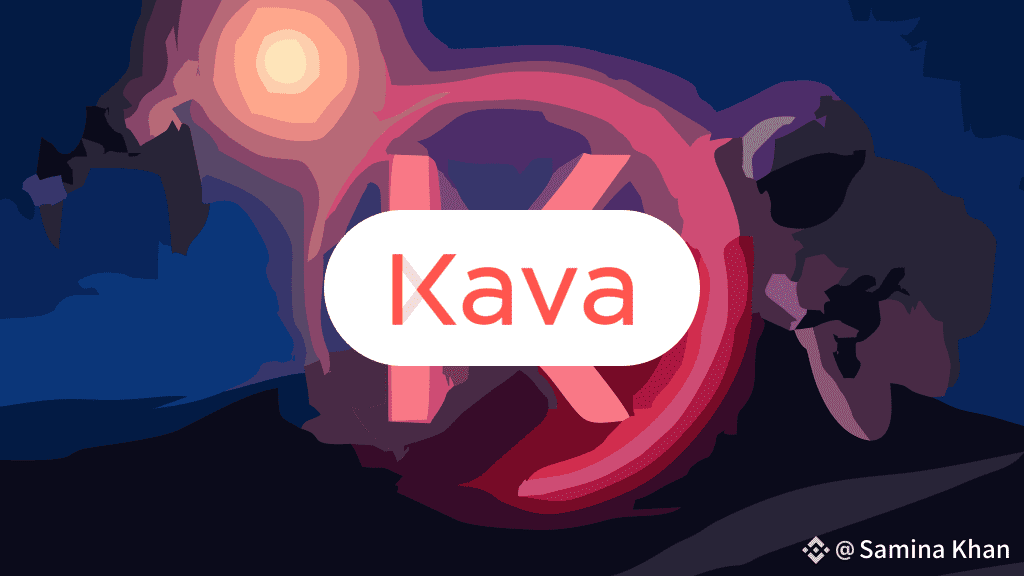In the fast-moving world of crypto, it often feels like you have to choose a side. Are you with Ethereum, the OG smart contract king, or are you on the side of Cosmos, the "internet of blockchains" that promises lightning-fast transactions? What if you didn’t have to choose? What if a project was built from the ground up to take the best of both and put them under one roof?

That’s the big idea behind the Kava Protocol. Kava is a Layer-1 blockchain with a unique, two-part design, often called a "co-chain architecture." It’s a bit like a high-tech train station where one track is a super-fast bullet train and the other is a local metro with a lot of stops. The bullet train, in this case, is the Cosmos Co-Chain, and the local metro is the Ethereum Co-Chain. And Kava has built a system to make sure that passengers (or in this case, users and developers) can hop between them seamlessly.
The Best of Both Worlds
So, what does this actually mean?
On one side, you have the Ethereum Co-Chain. This is where Kava brings the power and familiarity of the Ethereum Virtual Machine (EVM). Why is this a big deal? Because it means that the thousands of developers who have built decentralized applications (dApps) on Ethereum can easily deploy their projects on Kava. They get to use the same tools, the same programming language (Solidity), and tap into the same vast ecosystem of projects they already know. But instead of dealing with Ethereum's notoriously high gas fees and sometimes-slow transaction times, they get to operate on Kava's much faster and more cost-effective network.
On the other side, you have the Cosmos Co-Chain. This is the network's powerhouse. Built using the Cosmos SDK, it's designed for speed, scalability, and, most importantly, interoperability. Thanks to something called the Inter-Blockchain Communication (IBC) protocol, the Cosmos side of Kava can talk to dozens of other blockchains in the Cosmos ecosystem. This isn't just a gimmick; it allows for the free flow of assets and data between different chains, creating a much larger, interconnected financial hub.
The real magic happens with Kava's "translator module," which acts like the station master, making sure assets and information can travel effortlessly between the two chains. A DeFi application on the Ethereum side can suddenly access the liquidity and speed of the Cosmos ecosystem, and a Cosmos-based project can tap into the rich developer community and mature dApps on the Ethereum side.
More Than Just a Network: The KAVA Token
Every blockchain needs a native token, and for Kava, that’s the KAVA token. But KAVA is far from just a speculative asset. It’s the engine that powers the entire network, with three main jobs:
Security: Kava uses a Proof-of-Stake (PoS) consensus mechanism. This means that people who hold KAVA can "stake" their tokens to help validate transactions and secure the network. In return for their participation, they earn rewards in the form of newly minted KAVA. This is a crucial function, as it aligns the incentives of token holders with the long-term security and health of the network.
Governance: The Kava Protocol is a truly decentralized project, and KAVA token holders are the ones who run the show. By holding KAVA, you get to vote on important decisions, such as network upgrades, new partnerships, and how funds for ecosystem development are allocated. This gives the community a direct voice in the project’s future and prevents a small group of people from controlling it.
Utility: KAVA is used for paying transaction fees on the network. As the network grows and more dApps are built on it, the demand for KAVA for these purposes will increase. Additionally, KAVA can be used within various DeFi applications on the network, such as being used as collateral to borrow stablecoins like USDX.
The Kava Ecosystem and Its Purpose
Kava’s dual-chain architecture is designed to solve one of the biggest problems in crypto: a fragmented ecosystem. By building a bridge between Ethereum and Cosmos, Kava is creating a single, scalable hub for decentralized finance (DeFi), Web3 gaming, and other dApps.
Their developer incentive program, Kava Rise, is a smart way to attract top talent. Instead of just throwing money at developers, Kava rewards projects based on their actual usage and performance on the network. This ensures that the most successful and active dApps are the ones that get the most funding, leading to a vibrant and competitive ecosystem.
The ultimate goal is to create a platform that is not only fast and cheap but also easy to use for both developers and end-users. By integrating with major wallets and offering seamless cross-chain functionality, Kava is making it easier for everyday people to interact with the decentralized world without needing a computer science degree.
A Look to the Future
While Kava has made significant strides in its technical architecture and ecosystem growth, the journey is ongoing. As a newer project, it faces competition and the challenges of a volatile market. However, its unique strategy of blending the strengths of the two most important blockchain ecosystems positions it as a key player in the next generation of decentralized finance.
Kava is more than just a place to borrow or lend crypto; it's an ambitious project trying to build the backbone of a multi-chain future. It’s a testament to the idea that collaboration and connection, not competition and silos, will be what truly unlocks the potential of the decentralized web.



